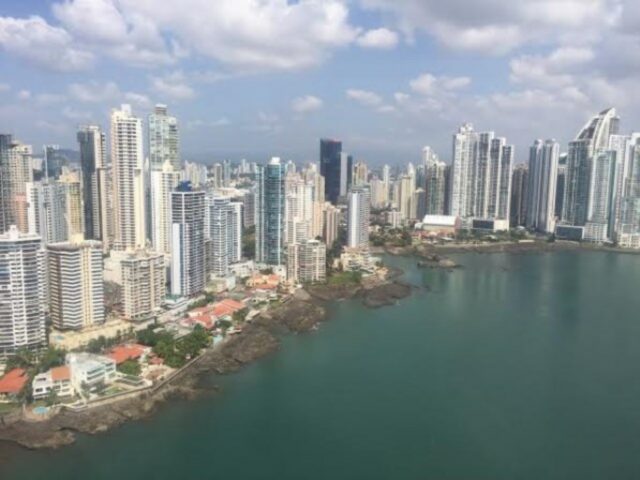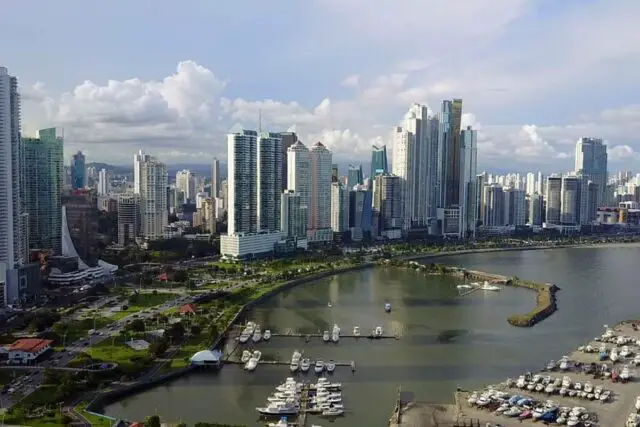According to the Economic Commission for Latin America and the Caribbean (ECLAC), the economic growth for this 2022 of Central America and Mexico will be 2.5%, while Panama will lead the ranking with 7.0%.
The figure for the country detonates a decrease after the forecasts given by ECLAC at the beginning of the year when it calculated an index of 7.3%. ECLAC also determined that Panama is among the 16 countries in the region that have not yet recovered the pre-pandemic level of gross domestic product.
The results come from the new edition of the annual report “Economic Study of Latin America and the Caribbean 2022”, dynamics and challenges of investment to promote a sustainable and inclusive recovery, in which it projects economic growth for the current year of 2 .7% average, in a context of strong macroeconomic restrictions that are hitting the economies of the region.
According to the report presented, a sequence of crises has led to the scenario of low growth and inflationary acceleration presented by the global economy, which, together with the lower growth of trade, the appreciation of the dollar, and the tightening of global financial conditions, will negatively affect the countries of the region.
Macroeconomic policies required
“In a context of multiple objectives and growing restrictions, a coordination of macroeconomic policies is required to support the acceleration of growth, investment, the reduction of poverty and inequality, while confronting inflationary dynamics”, declared Mario Cimoli, interim executive secretary of ECLAC, at the launch of the 2022 Economic Study.

The document highlights that the countries of Latin America and the Caribbean face a complex economic panorama in 2022 and in the years to come. Added to the lower economic growth are strong inflationary pressures, low dynamism in job creation, falls in investment and growing social demands. This situation has translated into great challenges for macroeconomic policy, which must reconcile policies that promote economic reactivation with policies aimed at controlling inflation and making public finances sustainable.
Added to the complex internal scenario of the region is an international scenario in which the war between the Russian Federation and Ukraine has caused growing geopolitical tensions, less dynamism in global economic growth, less food availability and increases in the price of energy that The inflationary pressures that had been occurring as a result of the supply shocks generated by the coronavirus disease (COVID-19) pandemic have increased, the report states.
ECLAC projects that South America will grow by 2.6% (compared to 6.9% in 2021), the group made up of Central America and Mexico by 2.5% (compared to 5.7% in 2021) and the Caribbean—the only subregion to grow more than in 2021—by 4.7%, not including Guyana (compared to 4.0% in the previous year).
Conflict in Ukraine
The 2022 Economic Survey also shows that the conflict in Ukraine intensified the upward trend that the prices of basic products had already shown since the second half of 2020, causing some of them to reach historical levels. For the region’s average, the effect is mixed, and a 7% drop in the terms of trade for basic products is projected.
Inflation, for its part, has continued to rise, standing at a regional average of 8.4% as of June 2022, which is equivalent to more than double the average value recorded in the 2005-2019 period. At the subregional level, it can be seen that in June 2022 the economies of South America had the highest level of inflation on average (8.8%), followed by the economies of the group made up of Central America and Mexico (7.5%) and those from the English-speaking Caribbean (7.3%). This has led to central banks increasing their monetary policy rates and reducing monetary aggregates.
On the other hand, the slowdown in economic activity is restricting the recovery of labor markets, especially for women. While the male unemployment rate went from 10.4% at the end of the second quarter of 2020 to 6.9% at the end of the first quarter of 2022, presenting a reduction of 3.5 percentage points, the female unemployment rate registered a decrease of 2.1 percentage points in the same period, going from 12.1% to 10.0%.
Likewise, at the end of the first quarter of 2022, the female labor participation rate (51.4%) shows a greater lag than the male participation rate (74.2%). This lag in the reintegration of women into the labor market is conditioned by the delay in the recovery of economic sectors that concentrate female employment and by the increase in the need for care that manifested itself strongly after the start of the pandemic.
Structural limitation of development

In its second part, the ECLAC report emphasizes that beyond the dynamics of the economic cycle, the low growth of investment in the last three decades has become a structural limitation of development. Therefore, reactivating the investment dynamic is central to sustainable and inclusive growth, since investment is the bridge between the short and medium term and is essential to face climate change.
Between 1951 and 1979, gross fixed capital formation (investment) in real terms grew by an average of 5.9% per year, while between 1990 and 2021 the average growth rate of investment was only 2.9% per year. For this reason, ECLAC makes an urgent call to increase investment in Latin America and the Caribbean, which was at the lowest levels at the end of 2021 compared to other regions.
To achieve the latter, greater coordination between fiscal, monetary, and exchange rate policy is necessary, as well as taking advantage of the set of tools available to the authorities so as not to subordinate growth and investment to anti-inflationary policy. In addition, macroeconomic efforts must be complemented by industrial, commercial, social and care economy policies, the document indicates.
Likewise, it is emphasized that an important part of the financing to increase investment must come from the mobilization of internal resources, but international cooperation must accompany this process. Therefore, official development assistance and financing from global financial institutions and development banks must be increased significantly.

For those who have experienced shifts in consciousness and know that more peace, joy, and love awaits in a better living environment. A bold shared vision. A living community and hub for innovation. A sustainable ecosystem for living and working. A model for the new future.
